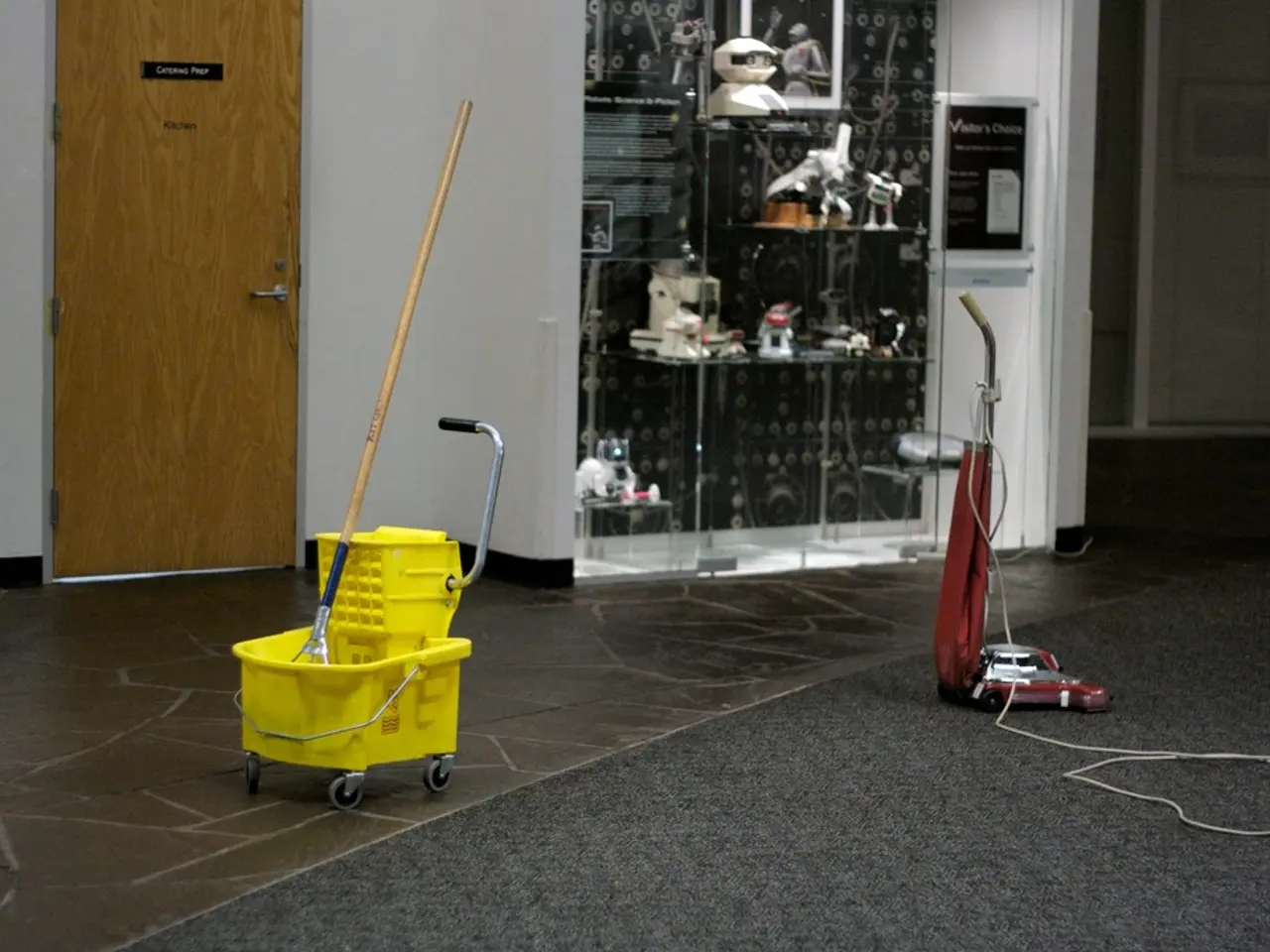Enhancing Product Quality by Incorporating Innovations into Clean-in-Place Skid Systems
Technology has revolutionized cleanliness in manufacturing, particularly through the advancement of Clean-in-Place (CIP) systems. These systems, which focus on reducing manual cleaning, increasing efficiency, and ensuring stringent hygienic standards, play a crucial role in industries such as food, beverage, pharmaceuticals, and biotechnology.
Key advancements in CIP systems include automation and process control, hygienic design features, data logging and integration, validation techniques, and a growing focus on sustainability and efficiency.
Automation and Process Control
Modern CIP designs integrate automated flushing, scroll rinsing, and programmable logic controllers (PLCs) that enable real-time fine-tuning of cleaning parameters such as flow rates and chemical dosing. This automation minimizes manual intervention, improves reliability, and ensures consistent sanitization across multi-product lines.
Hygienic Design Features
Upgraded systems use polished stainless steel, FDA-compliant seals, sanitary welds, and strategically placed CIP nozzles. These features optimize cleaning coverage and reduce contamination risks, allowing faster changeovers particularly in food-grade and pharmaceutical manufacturing.
Data Logging and Integration
CIP cycles now often include detailed data logging for traceability and integration into plant-wide monitoring systems. This digital connectivity supports compliance with stringent safety regulations and continuous process optimization.
Validation Techniques
Riboflavin coverage testing, which uses fluorescent riboflavin under UV light to visually confirm thorough cleaning, remains a foundational method to validate CIP effectiveness. This approach has evolved alongside CIP technology to ensure cleaning solutions fully cover all internal surfaces, helping meet FDA and other regulatory standards.
Sustainability and Efficiency
Recent CIP innovations also prioritize reducing water and chemical use. Eco-friendly solutions and faster cleaning cycles decrease environmental impact while lowering operational costs.
The Commitment to Quality and Sustainability
The commitment to quality among vendors often stems from a shared cultural heritage that values purity and health. Incorporating sustainability into CIP systems is a potential future innovation. Embracing the journey of technological advancement is important for fostering innovation in product quality.
Consumer Demands and Transparency
Consumers increasingly demand high quality and safety standards. Transparency in product sourcing and production practices is appreciated by consumers. Engaging in cultural events and local traditions can spark innovation and inspire a commitment to excellence. For instance, a local food festival showcased vendors dedicated to clean processes in producing offerings, serving as a reminder of the community's pride in maintaining high standards.
CIP Skids: Ensuring Effective Cleaning
The use of Clean-in-Place (CIP) skids in manufacturing enables efficient cleaning of processing equipment without disassembly. Monitoring cleaning cycles remotely enables businesses to ensure optimal quality and reduce water and chemical usage.
The Quality Dialogue Extends to the Consumer Experience
The quality dialogue in the industry extends to the consumer experience. When cultural richness intertwines with technological advancements, it often leads to unique approaches to ensuring product quality. Eco-friendly cleaning agents and energy-efficient designs could have a positive impact on quality standards and regulations.
Innovations surrounding CIP skids resonate with consumers, saving valuable time and enhancing overall efficiency of production lines. The next generation of CIP systems may focus on enhancing product quality while being stewards of the environment. This commitment to both quality and sustainability positions manufacturers to meet increasingly strict regulatory and consumer demands.
[1] "Cleaning-in-Place (CIP) Systems Market to Reach $15.1 Billion by 2025 - Increasing Adoption of IoT Sensors and Automated Cleaning Cycles to Drive Growth." PR Newswire. 2019. [2] "Clean-in-Place (CIP) Systems: Market Growth, Trends, and Forecast (2020-2025)." Market Research Future. 2020. [3] "The Future of Clean-in-Place (CIP) Systems: Sustainability, Automation, and Data Integration." Food Manufacturing. 2021. [4] "Riboflavin Coverage Testing: A Key Method for Validating CIP Effectiveness." Food Safety Magazine. 2018. [5] "FDA Guidance on Cleaning Validation." U.S. Food and Drug Administration. 2017.
- The advancement of Clean-in-Place (CIP) systems in manufacturing industries, such as food, beverage, and pharmaceuticals, is driven by key advancements like automation and process control, hygienic design features, data logging and integration, validation techniques, and a growing focus on sustainability and efficiency.
- Incorporating automation in CIP designs, such as automated flushing, scroll rinsing, and programmable logic controllers (PLCs), minimizes manual intervention, improves reliability, and ensures consistent sanitization across multi-product lines.
- Data logging and the integration of CIP cycles into plant-wide monitoring systems support compliance with stringent safety regulations and continuous process optimization.
- Riboflavin coverage testing, which uses fluorescent riboflavin under UV light to visually confirm thorough cleaning, remains a foundational method to validate CIP effectiveness and ensure cleaning solutions fully cover all internal surfaces, meeting FDA and other regulatory standards.




